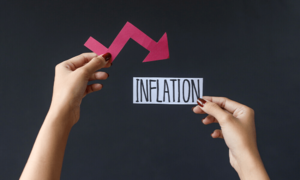In an interview with a news agency on 10th November, 2009, State Bank Governor Syed Salim Raza seems to have tried to give a positive spin to the latest trends in economy. Stressing that economy was out of woods, he supported his contention by underlining that the growth rate has been seen at around 3 percent during FY10 and that Pakistan will not need additional financial assistance, despite the hefty costs of fighting the insurgents.
The country could easily be kept afloat by the IMF loan of $7.6 billion negotiated in November, 2008, which was later enhanced to $11.3 billion in July, 2009. The FoDP had also pledged another $5.7 billion in aid in April but its disbursement, which is tied to projects and specific expenditures, is likely to be slow.
Nonetheless, the country was expecting $1.5 billion to $2.0 billion during the course of this financial year from this source. So far as the future growth rate was concerned, it was expected to pick up to 4.5 percent during FY11 and accelerate further to 6 percent in the subsequent three years, despite the estimated cost of fighting militants at one to two percentage of the GDP.
The Governor, SBP had also no hesitation in saying that he was against the excessive monetary and fiscal stimulus to avoid a return of high inflation. He stressed the point that we need to be careful about moving too fast so that inflation is not let loose again. Inflation had peaked at a record high of 25.3 percent in August, 2008 due to soaring commodity and oil prices, before gradually easing to 10.1 percent in September, 2009.
According to the Governor, there were chances that inflation may slip to a single digit in October. While lower inflation and low private sector credit growth are paving the way for some relaxation in the monetary policy stance, an increase in electricity tariffs, risks to oil prices and a pressure on the government's fiscal position, due to war costs, called for a cautious attitude.
In our view, the observations of the State Bank's Governor about the present state of the economy are only partly correct. Most of the analysts believe that the current year's GDP growth rate is likely to be around 3 percent, or higher by one percentage point than in 2008-09, but the Governor's hope of the growth rate to accelerate to 4.5 percent in FY11 and 6.0 percent in the next three years does not appear to have a sound basis.
Obviously, the growth rate in the medium term would depend on a number of factors, including a considerable rise in the national saving rate, adequate energy generation, political stability, proper law and order situation and the confidence of investors. Although all of us would like to have very conducive conditions for development, yet nothing could be said with certainty at this point of time.
So far as the external sector is concerned, of course the country could be kept afloat by IMF assistance, likely to be available in the next few months, but a large part of the improvement in the current account was also attributable to a substantial reduction in the trade deficit and a sharp increase in home remittances.
An increase in commodity and oil prices in the international market or a slowdown in remittances could have a negative impact on the external sector. Even otherwise, IMF loans are always a kind of exceptional lending and cannot be regarded as a normal or sustainable source of external finance. In fact, the pressure on the balance on payments could increase when these loans become due for payment.
The fiscal position of the country also continues to be a challenge for the authorities. We have missed the performance criteria of the budget deficit by 0.2 percentage points and are requesting the IMF for a waiver. Increasing militancy, unemployment and poverty also continue to be huge challenges for the government.
Overall, we feel that the economy has stabilised to an extent, but certainly is not out of the woods as yet. The State Bank's annual report, released on 29th October, 2009, also conveys, more or less, a similar sense. However, we don't find any fault in the Governor's remarks about inflation and the monetary policy.
It was largely due to the stringent monetary stance that inflation has eased and any further adjustment in interest rates would depend on the future trend in prices, which is likely to be affected by a host of factors including those listed by the Governor. We would like the State Bank not to waiver from its present approach for the sake of financial stability.
BR100
11,866
Decreased By
-213.1 (-1.76%)
BR30
35,697
Decreased By
-905.3 (-2.47%)
KSE100
114,148
Decreased By
-1904.2 (-1.64%)
KSE30
35,952
Decreased By
-625.5 (-1.71%)


























Comments
Comments are closed.